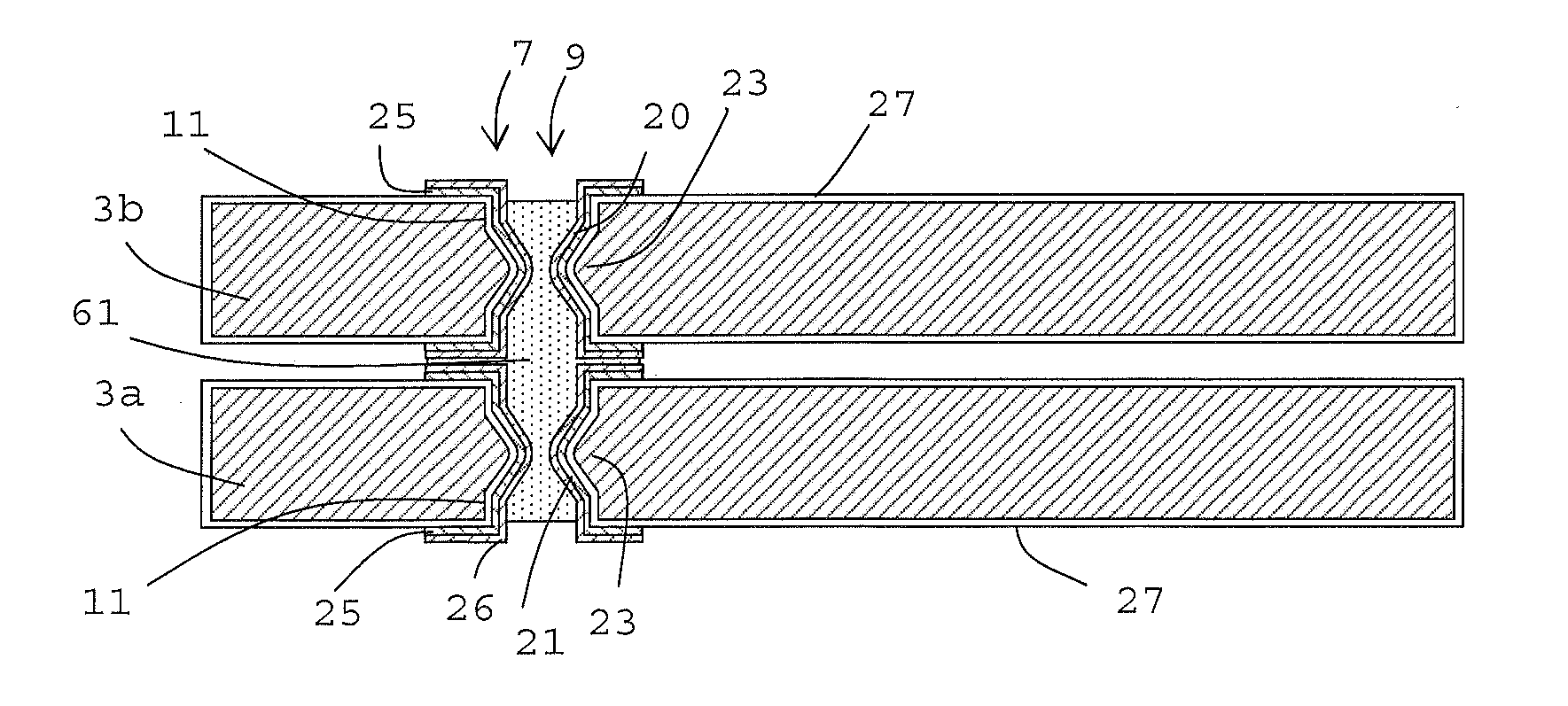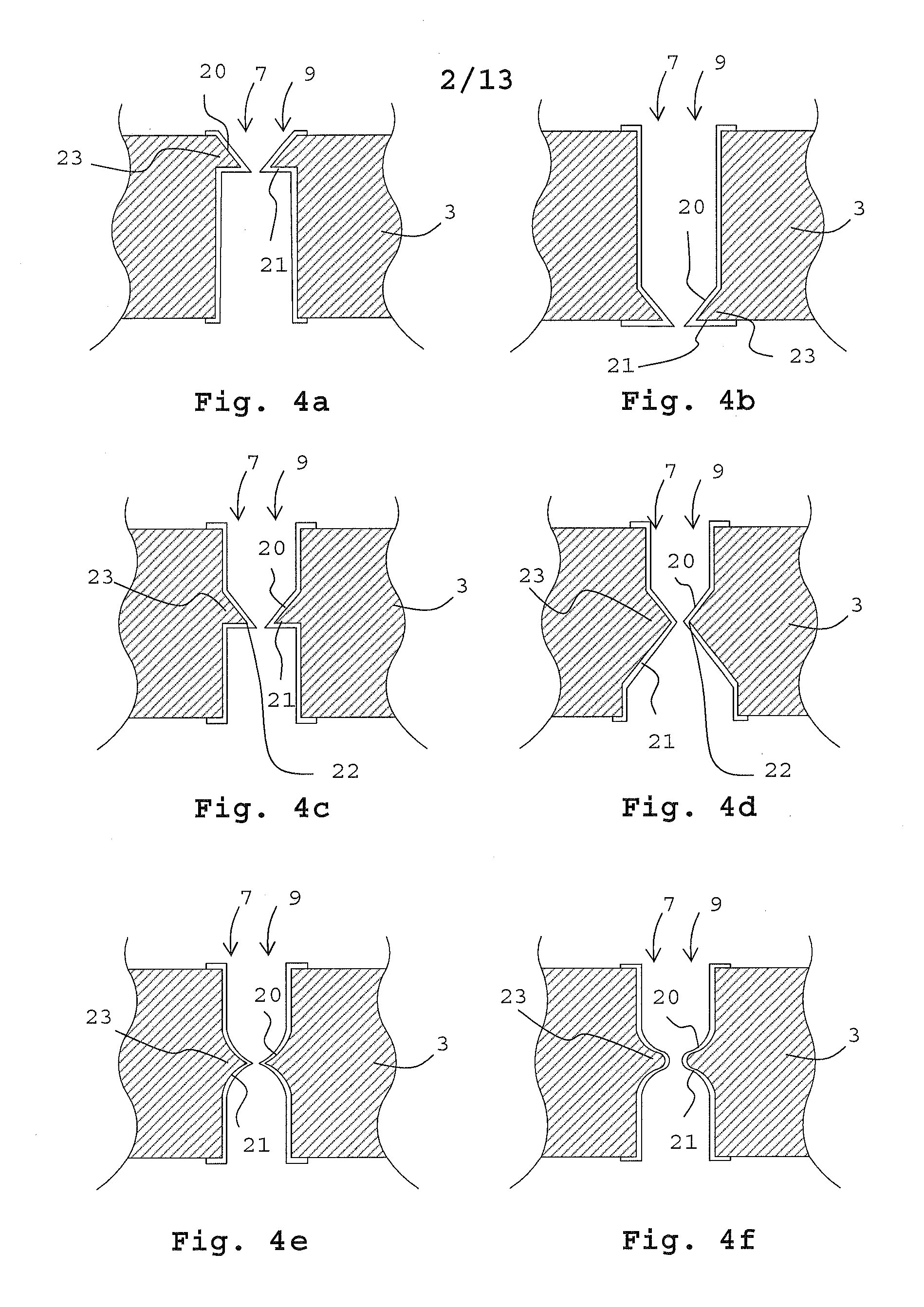Low resistance through-wafer via
- Summary
- Abstract
- Description
- Claims
- Application Information
AI Technical Summary
Benefits of technology
Problems solved by technology
Method used
Image
Examples
Embodiment Construction
[0046]For the purpose of this application the term “electronic device” refers to microelectronic devices, electronic MEMS devices, electronic nanotechnology devices, as well as simpler electronic devices. A microelectronic device may comprise microelectronic components such as integrated circuits integrated in the wafer surface or arranged on the surface of the wafer. A MEMS device may be formed by micromachining of e.g. a semiconductor wafer or surface micromachining on a wafer. The simpler electronic device may be a substrate used as a carrier for electronic components or an intermediate layer between other electronic devices. The term “wafer” originates from the fact the electronic devices such as integrated circuits and mostly also MEMS structures are made from silicon wafers. However the term wafer is not limited to silicon wafers or circular substrates, which is the typical shape of silicon wafers, but refers to all substrates suitable for use in electronic devices.
[0047]The d...
PUM
 Login to View More
Login to View More Abstract
Description
Claims
Application Information
 Login to View More
Login to View More - R&D
- Intellectual Property
- Life Sciences
- Materials
- Tech Scout
- Unparalleled Data Quality
- Higher Quality Content
- 60% Fewer Hallucinations
Browse by: Latest US Patents, China's latest patents, Technical Efficacy Thesaurus, Application Domain, Technology Topic, Popular Technical Reports.
© 2025 PatSnap. All rights reserved.Legal|Privacy policy|Modern Slavery Act Transparency Statement|Sitemap|About US| Contact US: help@patsnap.com



